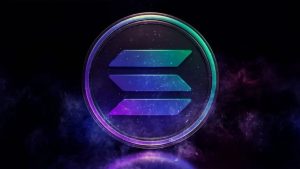Every day, a new crypto project launches promising to be the “next big thing.”
But here’s the truth:
If the tokenomics suck, the project won’t survive — no matter how good the hype looks.
Tokenomics — short for “token economics” — is what makes a crypto asset valuable, usable, and sustainable.
If you ignore it, you’re gambling.
If you understand it, you gain a serious edge as a trader and investor.
In this guide, we’ll break down:
- ✅ What tokenomics actually means
- ✅ The key metrics that matter most
- ✅ How to spot red flags before you invest
- ✅ Examples of strong token models
- ✅ How we break this down inside the EPIQ Trading Floor
Let’s dive in.
🧠 What Is Tokenomics?
Tokenomics = the economic design of a cryptocurrency.
It answers these core questions:
- How many tokens exist?
- Who owns them?
- How are they distributed and used?
- What incentives keep the ecosystem healthy?
- Does the design reward early holders… or just insiders?
A solid tokenomics model creates supply/demand balance, incentivizes long-term growth, and minimizes manipulation.
Bad tokenomics?
That’s how you get pump-and-dumps, early VC dumps, and unsustainable ecosystems.
🧩 7 Key Tokenomics Metrics to Analyze Before You Invest
✅ 1. Total Supply vs Circulating Supply
- Total Supply: Max number of tokens that will ever exist
- Circulating Supply: What’s currently on the market and tradable
Red Flag: If only 10–20% of the supply is circulating, that means most tokens are locked — and may be dumped later.
✅ 2. Market Cap vs Fully Diluted Valuation (FDV)
- Market Cap = Price × Circulating Supply
- FDV = Price × Total Supply
FDV shows the true long-term valuation.
Some coins look “cheap” based on price, but their FDV is already in the billions — which limits upside.
✅ 3. Token Allocation Breakdown
Where did the tokens go when the project launched?
A healthy breakdown might look like:
- 50% to community/LP rewards
- 20% to team (vested over 3–4 years)
- 15% to treasury or ecosystem development
- 10% to early backers (VCs)
- 5% for public sale
Red Flag: If 40%+ of tokens are unlocked and in the hands of insiders early, it’s a setup for a dump.
✅ 4. Vesting Schedules
Vesting = tokens released over time, not all at once.
Smart vesting = lower sell pressure.
Check sites like TokenUnlocks to see upcoming unlocks.
Red Flag: Major unlocks coming up soon = likely sell pressure ahead.
✅ 5. Token Utility
What does the token do in the ecosystem?
Does it have real value, or is it just for staking/pumping?
Strong utility examples:
- Gas fees (ETH, BNB)
- Governance (UNI, AAVE)
- Collateral (DAI, CRV, RSR)
- Access to services or revenue share
No real utility = no long-term demand.
✅ 6. Burn Mechanisms or Deflation
Some tokens have burn systems to reduce supply over time (e.g., BNB, SHIB).
Others rely on staking or transaction fees to keep supply in check.
Deflation + demand = price appreciation potential.
✅ 7. Incentive Models
Are users, validators, or developers incentivized to hold and build?
Look for:
- Staking rewards
- Liquidity mining
- Developer grants
- Holder benefits
Well-designed incentives = sticky user growth.
📈 Examples of Projects With Strong Tokenomics
- Ethereum (ETH) — Scarcity via EIP-1559 burn + huge utility = demand
- Chainlink (LINK) — Required for oracles, staking incentives incoming
- Lido (LDO) — Revenue share, governance, and huge ETH staking exposure
- Aave (AAVE) — Utility in governance and lending protocol security
- Bittensor (TAO) — Economic incentives for decentralized AI model contribution
🚨 Tokenomics Red Flags to Avoid
- Massive insider allocations with no vesting
- High FDV with no real utility
- Fake burns or unsustainable staking APYs
- 95% of the token supply still “locked”
- Zero incentive for users to actually hold the token
When in doubt — zoom out.
Look at the design, not just the hype.
🧠 How We Break Down Tokenomics Inside EPIQ
Tokenomics is part of every research deep dive we do.
Inside the EPIQ Trading Floor, we give members:
📚 Academy training — How to evaluate projects from scratch
📊 Project deep dives — Real-world examples of tokenomics breakdowns
📈 Trade alerts & research — Focused on tokens with smart design and potential
🧠 Live weekly calls — Where we analyze upcoming projects and market narratives together
💬 Community feedback — Bounce ideas off experienced traders before aping in
Whether you’re investing long-term or swing trading short-term pumps, tokenomics can tell you if the project has legs — or if it’s built to be dumped.
🎯 Want to Trade Tokens With Confidence — Not Guesswork?
Tokenomics is where smart money starts.
If you want to stop falling for hype and start learning how to break down coins like a pro, join EPIQ today.
✅ Project research tools
✅ Structured education
✅ Weekly alpha calls
✅ High-probability trade setups
✅ A real community that does the work — not just vibes
🎯 Start your 3-day free trial now → epiqtradingfloor.com
Don’t get dumped on. Learn what makes a token truly worth holding.
⚠️ Disclaimer:
This blog is for informational purposes only and does not constitute financial advice. Always do your own research before trading or investing in crypto.










Responses